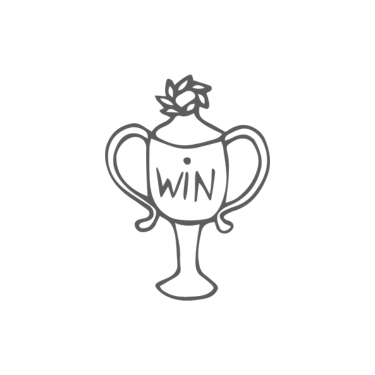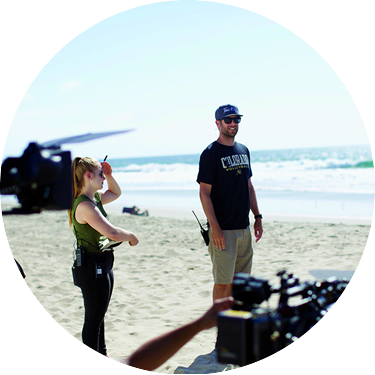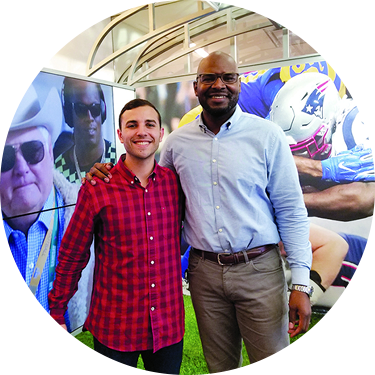More than a Game
By Tammy Rae Matthews (PhDJour’20) and Stephanie Cook (MJour’18)
The numbers alone were eye-popping: 105 combined points, over 1,000 rushing yards, 56 first downs and 10 passing touchdowns.
With less than 2 minutes remaining in the final quarter, the Los Angeles Rams made a game-clinching 40-yard touchdown pass, defeating the Kansas City Chiefs 54-51 in the highest-scoring game in Monday Night Football history.
That November 2018 game at the Los Angeles Memorial Coliseum is a career highlight for Jay Rothman (Jour’84), lead producer of Monday Night Football—mostly for reasons that have nothing to do with the stats.
“The highlights of my career have been when events I’ve produced—and intimately been involved in—have united people and a region, more than the game itself,” he says.
During the weeks leading up to the game, a gunman killed 12 people at the Borderline Bar and Grill in Thousand Oaks, California. Meanwhile, a string of fires—including the Camp Fire near Sacramento and the Woolsey Fire in L.A.—had already killed 80 people and forced hundreds of thousands of evacuations. Among the evacuees were several Rams players.
In response, the team passed out thousands of free tickets to local emergency, aid and law enforcement officials. The game brought together survivors of the shooting and fires, and gave exhausted firefighters and rescue workers a moment of reprieve. The night’s theme, LA Together, became a rallying cry for the entire city. It also showed how sports are about more than just a game—or even a season.

“The value of studying sport is that you can learn about the world around you.”
—Assistant Professor Patrick Ferrucci
Ferrucci, who studies the intersection of race, gender and sports in journalism, is the faculty director of CMCI’s new sports media minor.
Available to all CU students, the minor is designed to be “as open-ended as possible” so it can complement any major degree, as well as certificate programs in ethnic studies and business, Ferrucci says.
Cross-discipline exposure is critical for preparing students for a career in the sports world, which spans many industries and often requires a diverse skill set.
This is made clear by alumni like Joe Nahra (Jour’91), who trained in journalism, sports administration and law on his way to becoming a legal and business affairs executive at Creative Artists Agency.
“As a journalism student at CU, I did a bunch of sports writing and eventually decided to get a master’s degree in sports administration,” he says. “I shifted to event marketing and operations before going to law school and getting into athlete representation with IMG, then the NFL Players Association and now CAA Sports.”

“I am always inspired by the people we meet and the countries we have the opportunity to explore. I’ve found Team USA athletes have such a pure love of their sport and a sincere desire to be a part of something bigger than themselves. They inspire me.”
—Cheryl Preheim (Comm’95), journalist, anchor and Olympic reporter at large for WXIA Atlanta, pictured right.

Students have the flexibility and freedom to explore a number of sports-related issues through the minor, including race and gender dynamics, business and economics, health and wellness, inclusion and safety, fandom and rhetoric, and more.
“In my class, we use sport as a lens to look at gender, race, class, globalization and who benefits from the way things are structured,” says Senior Instructor Jamie Skerski, who teaches Gender, Culture and Sport in the Department of Communication. “People talk about sports in a way that is very personal. People are passionate about it.”
Alumni working in the sports industry know that this type of theoretical framework transcends the classroom, often coming into play in concrete ways throughout their careers.

“I was a college athlete at CU and worked closely with other CU teams aside from my own. The bond that athletes form, and the teamwork needed for success, was and is something I continue to cherish in my field.”
—Jake Loskutoff (Comm’03), founder, director and editor of LIFEinaVAN Studios

“As far as I know, I was the first female sports editor for the Campus Press newspaper,” says Bonnie Jean Evans (Jour’90), the communications manager for USA Volleyball. “That helped me prepare for what it was going to be like to be a female in the mostly male world of sports journalism and communications.”
Like Evans, students in the new minor can gain hands-on training through a number of student media outlets housed within the college and campus.
Because of Boulder’s prevalent sporting and outdoor lifestyle and its proximity to Denver’s major media and sports market, Ferrucci notes, CU has become a sports hub among national universities.
“We have so much in terms of the breadth of what we can consider sport,” he says. “CU is a Pac-12 school with its own culture and sport.”

“Having spent more than half my career developing sports product, I know that the unique technical education that CMCI combines with journalism makes it one of the most valuable degree programs for anyone focused on delivering sports to fans.”
—Neal Scarbrough (Jour’84), executive editor at Fox Sports

Lindsay Lew (MJour’98), the assistant director of digital and database marketing for CU’s athletics department, agrees.
“We live and work in a market where you can see just about any form of professional sports at the highest level,” she says.
For students interested in sports at any level, this is a big advantage. High-level internships and work-study positions located on and near campus can offer networking opportunities and prepare students to enter an evolving job market.
“I was fortunate to have a two-year sports internship at KMGH-TV in Denver, which provided me with a number of opportunities, including an independent study with the U.S. Ski Team,” Rothman says.


“Staying creative can always be a challenge, especially working in baseball—162 games can become very repetitive, and you just get used to doing the same stuff daily. We try our best to stay creative at all times to make our account different and have fans enjoy following us.”
—Nicole Morris (Comm’16), social media assistant for the Colorado Rockies
Last year, Rothman and other alumni visited campus for CMCI’s inaugural Sports Media Summit. Sudents had a chance to meet sports notables including Chris Fowler (Jour’85)—a host and play-by-play commentator at ESPN who previously hosted College GameDay—and Jim Gray (Jour’81)—a reporter and commentator with Showtime, Fox and Westwood One Radio who has worked with ESPN, NBC Sports and CBS Sports.
Students should capitalize on their time at CU as much as possible, alumni say, as these programs can build the foundation for a future in sports.
Reflecting on the advice he would give to himself as a college student, Sean Aronson (Jour’99), vice president and director of broadcasting and media relations for the St. Paul Saints, says, “I would tell him to take advantage of as many opportunities as you can. Immerse yourself in everything. Talk to as many people as possible.”
“I began my career with the aspiration of becoming an NFL scout (I played football for CU from 2000 to 2004). I discovered an opportunity with ESPN in the late 2000s, took a risk... and the rest is history.”
—Jesse Wallace (Comm’05), vice president of affiliate distribution at the NFL Network, pictured right


Tammy Rae Matthews graduated from CMDI with a PhD in Journalism in 2020.
Stephanie Cook graduated from CMDI with a Masters in Journalism in 2018.

